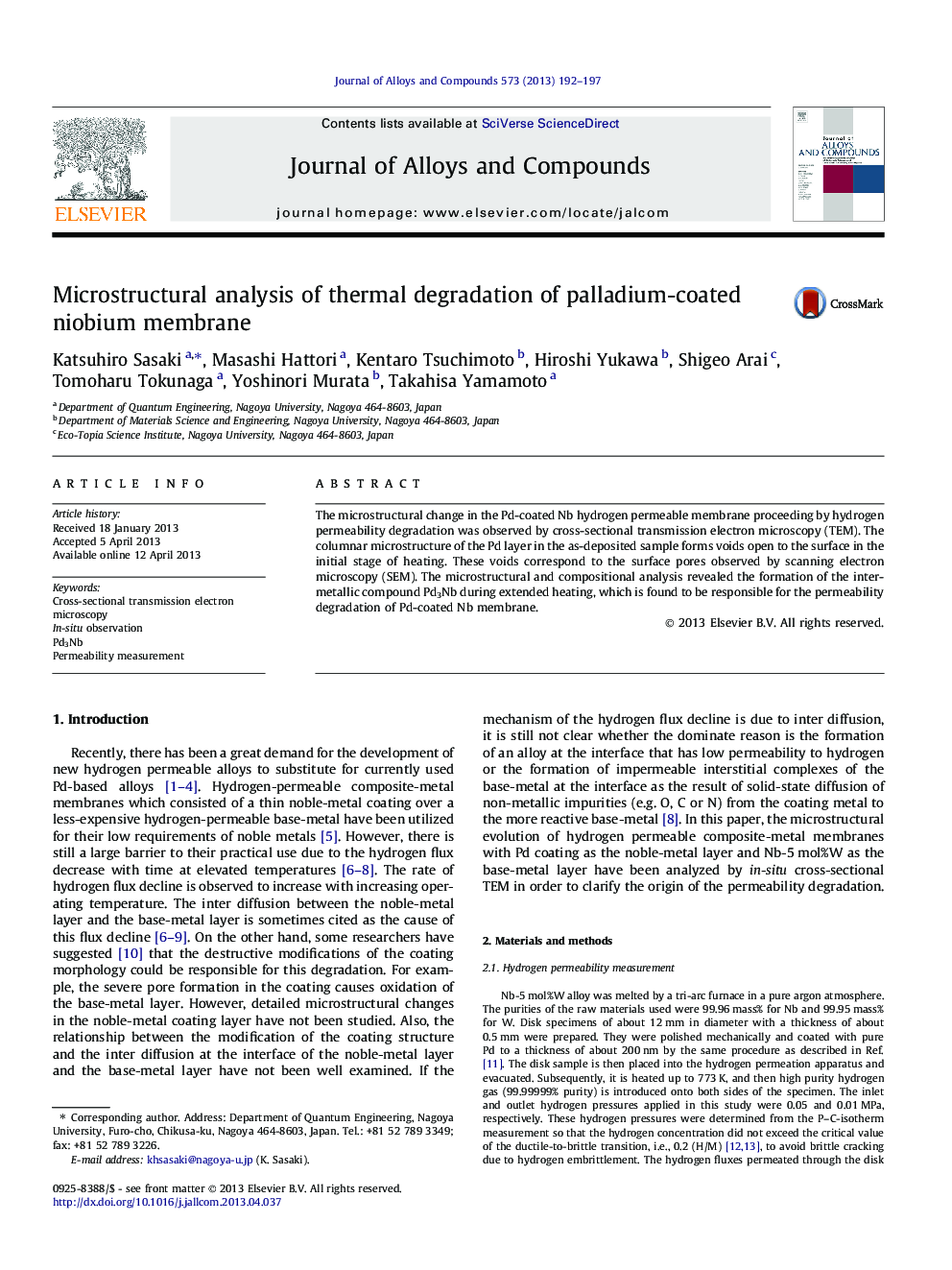| Article ID | Journal | Published Year | Pages | File Type |
|---|---|---|---|---|
| 1613923 | Journal of Alloys and Compounds | 2013 | 6 Pages |
•We observed the microstructural evolution of the Pd coated Nb permeable membrane using the novel in-situ high temperature XTEM technique.•The pores on the Pd surface are formed as a result of void formation on the grain boundaries in the columnar Pd microstructure.•The formation of the intermetallic compound Pd3Nb is responsible for the permeability degradation.
The microstructural change in the Pd-coated Nb hydrogen permeable membrane proceeding by hydrogen permeability degradation was observed by cross-sectional transmission electron microscopy (TEM). The columnar microstructure of the Pd layer in the as-deposited sample forms voids open to the surface in the initial stage of heating. These voids correspond to the surface pores observed by scanning electron microscopy (SEM). The microstructural and compositional analysis revealed the formation of the intermetallic compound Pd3Nb during extended heating, which is found to be responsible for the permeability degradation of Pd-coated Nb membrane.
